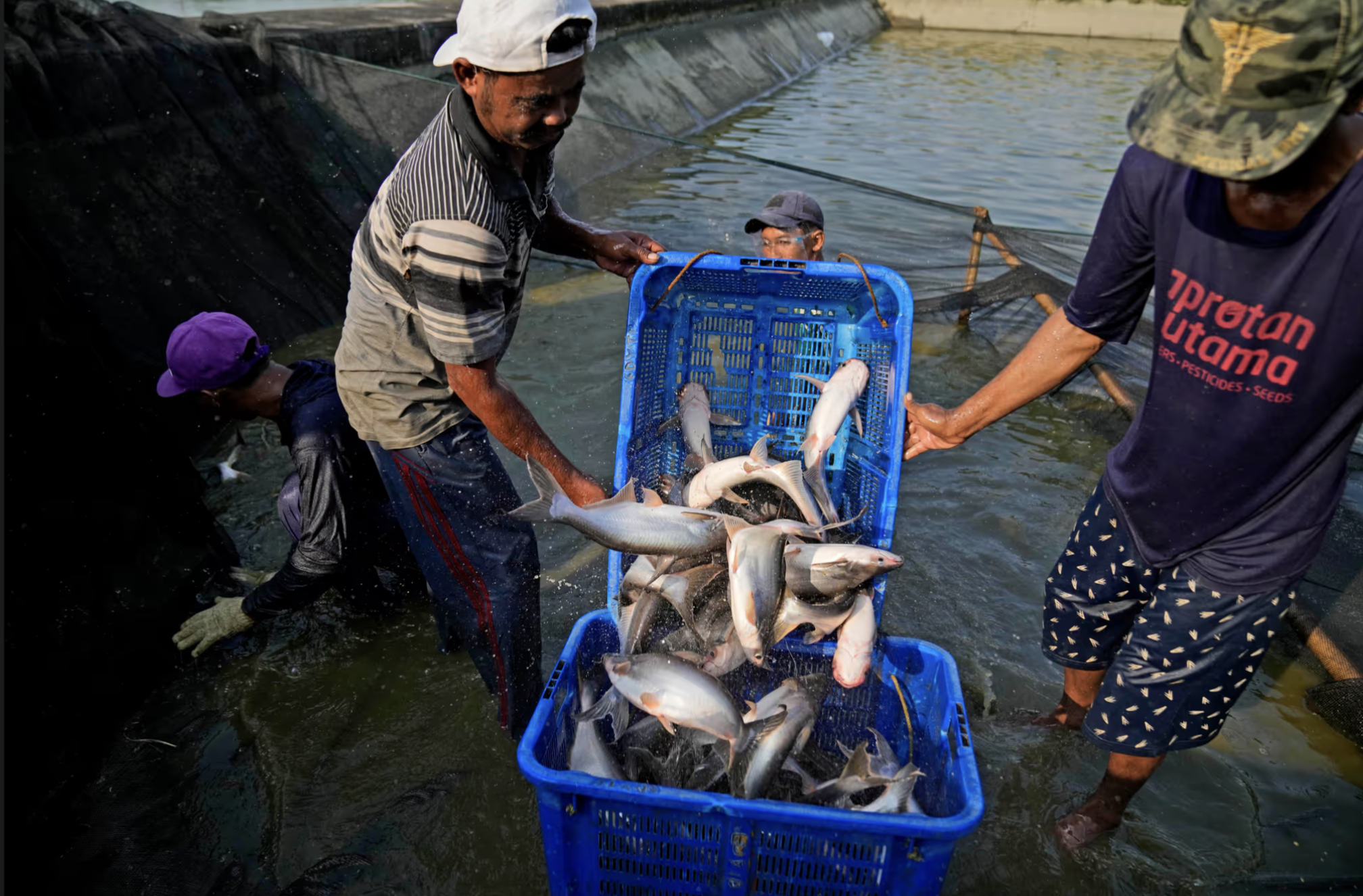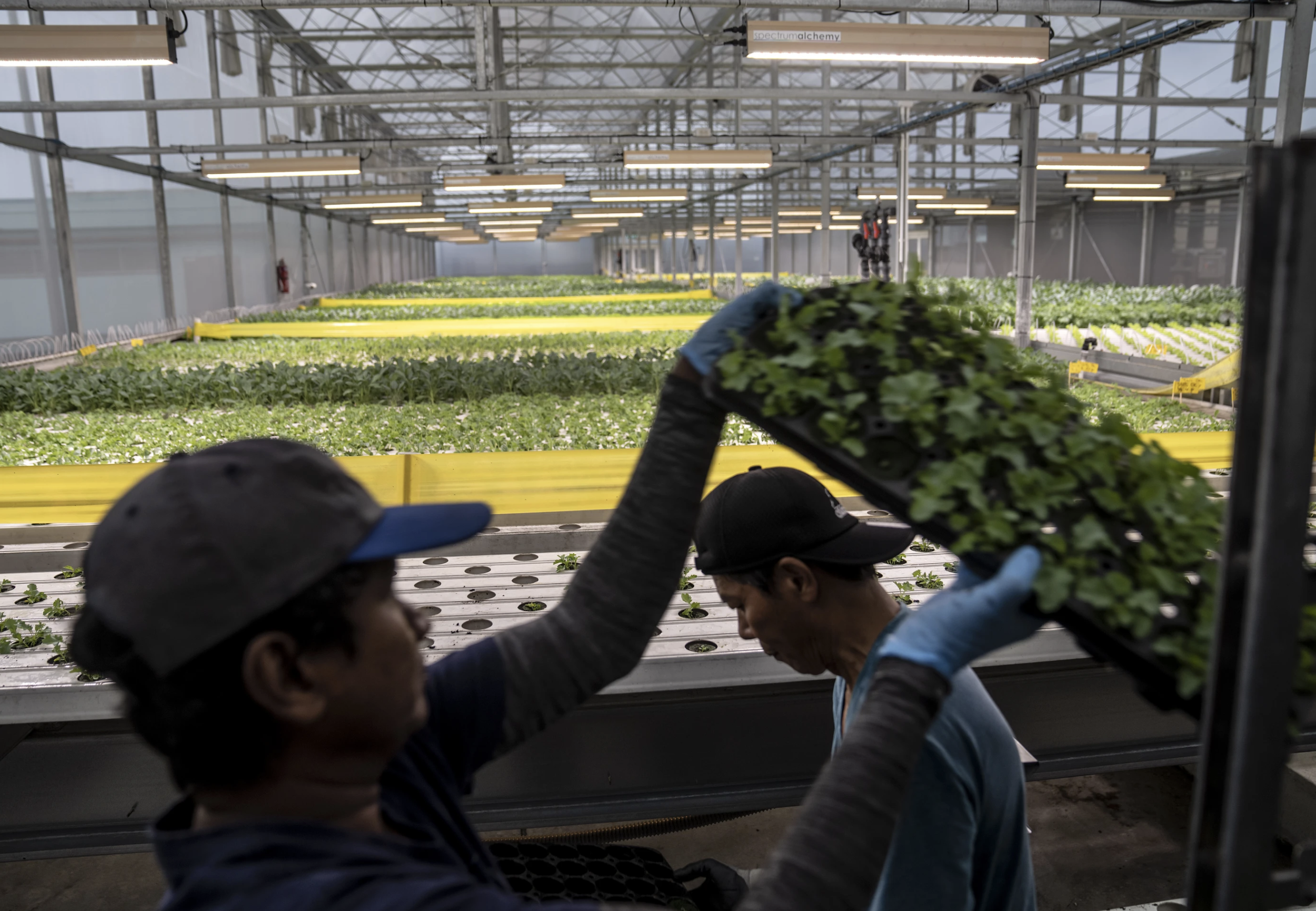VICTORIA MILKO
MULTIMEDIA JOURNALIST
AP Video: Terry Chea, David Goldman, Lucas Dumphreys, Yesica Fisch, Shelby Lum, Daniel Niemann, Brittany Peterson, Fadlan Syam, Emma H. Tobin, Angie Wang, Kathy Young, Olivia Zhang
Can we feed the world without starving the planet? A team of AP journalists explored this, trying to learn more about how food production affects the climate and environment and how that could change in the future.
This series received the 2024 James Beard Media Award for Innovative Visual Storytelling.
From Asia-Pacific we set out to answer two questions: Can we make seafood more sustainable? And how do we produce more food on less arable land? To find answers, we turned to Indonesia and Singapore.
AP Video/ Fadlan Syam and Kathy Young
Fish farming and shellfish production usually spew far less greenhouse gas emissions than production of beef and other animal protein, but aquaculture can still cause serious environmental problems.
And as it has grown, the problems with large-scale farming have grown with it. Many are like problems that face massive chicken, pig and cattle operations. The farms and the waste from them can degrade and pollute nearby ecosystems, diseases can quickly sweep through the tightly packed fish, and gathering the feed for the animals can cause distant environmental problems.
Faced with stinging criticism and tighter regulations — and eager to meet demand — fish farmers are trying new ways to boost production and minimize harm. In Indonesia, that’s done by government-backed “fishing villages.”
AP Photo/David Goldman
Like much of the rest of the world, Singapore is racing to feed a growing population with limited natural resources. But with almost no land for agriculture this small, wealthy, fast-paced and densely-packed nation is doing so by embracing and encouraging new food technologies that may someday help feed us all.
In 2019 Singapore launched a program called 30 by 30, designed to spur the country to produce 30% of its food by 2030, while still using less than 1% of its land for agriculture. The program has encouraged innovation that may offer a peek into the world’s food future as land and resources become more scarce around the world.
Consumers can be reluctant to change, and producers have found it hard to turn a profit because costs are high.
It is far from clear Singapore will reach its 30% goal by 2030. But along the way it may help teach the world — through successes and failures — how to reduce the amount of land needed to produce our favorite dishes.

